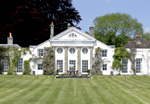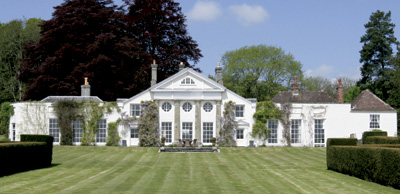The farmland market is booming
Buyers are attracted to farmland because of the investment potential and rarity of stock


The exemption of farmland from liability to Inheritance Tax is one reason why farms and landed estates continue to appeal to farmers and investors, even during a recession. Another is the simple matter of supply and demand. As Dr Jason Beedell, head of research at land agents Smiths Gore, observes: ‘Before the 1990s, about 4% of land would be sold in a year, so, on average, farmers knew that there would be an opportunity to buy neighbouring land once every 25 years or so.
Now, the volume of land traded has dropped so much that the opportunity may only present itself once in a lifetime. The desire to seize an opportunity when it arises, coupled with a generally optimistic farms sector, has resulted in fierce competition in recent years, and it's not uncommon to have 10 bidders for every farm that comes onto the market.'
Were it not for the sudden death last year, at the tragically early age of 48, of David Woodhouse, former managing director of his family's 230-year-old Hall and Woodhouse brewery at Blandford St Mary, Dorset, his much-loved West Lodge estate at Iwerne Minster, six miles from Shaftesbury, would never have come to the open market. As it is, the launch of the spectacularly beautiful, 866-acre farming and sporting estate, at a guide price of £12 million through Fowler Fortescue (01747 820031) and Knight Frank (020-7629 8171), has brought prospective purchasers jetting in from Europe, New York and Australia.
‘As a sporting estate, West Lodge is out on its own,' says Clive Hopkins of Knight Frank, who describes the estate, with its iconic, Grade I-listed family house-the last surviving royal hunting lodge in the Cranborne Chase-as ‘a South-West jewel'. The delightfully unspoilt house, which has views to the Isle of Wight, was built by John Pitt, architect of nearby Encombe, in 1753, and remodelled in the early 1800s. It has entrance and inner halls, three main reception rooms, a kitchen/breakfast room, family rooms and offices, eight bedrooms and six bathrooms.

* For more properties like this every week, subscribe and save
West Lodge sits at the heart of the estate, surrounded by formal and walled gardens, ancient parkland, farmland, and dramatic wooded valleys-the classic terrain for a ‘fantastic' high-bird pheasant and part-ridge shoot. Estate buildings include a stable block, modern and tradition farm buildings a four-bedroom farmhouse and five cottages. The land is farmed mainly in hand, with a few areas let on short-term tenancies; the woodland is subject to a long-term woodland-management scheme ending in 2028.
The magnificent, 1,580-acre Holystone estate at Farnham, in the lovely Coquet valley near Rothbury, Northumberland, was part of the barony of Alnwick in 1242, and comprised some 6,000 acres when Gustav Renwick, great-grandfather of the current vendors, bought it in the 1920s. The remains of the medieval village and Farnham Tower still lie within the estate boundary, although they're not scheduled monuments. Now, following the restructuring of the Renwick family's land-holdings in the area, the renowned sporting and farming estate is for sale through Strutt & Parker (01670 500870) at a guide price of £6.1 million for the whole, or in two lots.
Sign up for the Country Life Newsletter
Exquisite houses, the beauty of Nature, and how to get the most from your life, straight to your inbox.
Now, there's no grand house at Holystone, although the main Low Farnham Farmhouse, which has four bedrooms, four reception rooms and extensive gardens adjoining a range of traditional buildings, has been extended to create a large sun room, with breathtaking views. The estate also includes stylish, four-bedroom Farnham Park, built in 2004, six further cottages and two ranges of modern farm buildings.
The landscape, which rises from 328ft above sea level to 720ft on the estate's south-eastern edge, is a pleasing blend of grassland, arable and woodland, which creates diverse and challenging sport. The estate's 1,357 acres of productive farmland, currently farmed in-hand, incorporates a livestock and arable enterprise and is managed under a Countryside Stewardship and Entry Level Stewardship scheme that together produce an income of about £32,000.
Together with 172 acres of deciduous and coniferous woodland, the land forms part of an established pheasant and partridge shoot with 19 individual drives, the rights to which are let until 2015, with a break clause allowing repossession in February 2013. Roe deer provide good stalking (not included in the shooting lease). An added bonus is 3½ miles of double-bank fishing on the Coquet, one of the most consistent, established salmon fisheries in England and Wales.
Warmed by the waters of the Gulf Stream, the 11,595-acre Ardfin estate on the mystical Inner Hebridean island of Jura, eight miles off the coast of Argyll, has been owned by successive generations of the Riley-Smith family from Yorkshire since 1938, when Charles Campbell, the last Laird of Jura, sold the island as several estates. Now, diverging family interests have prompted the sale of the island's premier farming and sporting estate, which includes seven small islands and 10 miles of coastline: Ardfin is on the market through Strutt & Parker (0131-226 2500) at ‘offers over £3.5 million' for the whole.
At the heart of the estate stands imposing, Victorian Jura House, built by the Campbells in 1881, surrounded by 20 acres of famous gardens, grounds and woodland developed over 30 years by Ardfin's head gardener, a trained botanist. Built of dressed locally hewn stone under a pitched slate roof, Jura House, listed Category C by Historic Scotland, was conceived as a sporting lodge large enough to accommodate a tradi-tional house party. It has five fine reception rooms, and 16 bedrooms on four floors.
In addition, the estate has seven more houses and cottages, and two courtyards of stone outbuildings with obvious development potential. Ardfin is famous for its large stags and prolific red-deer stalking, and has an average annual cull of 46 stags and 91 hinds, some weighing more than 20 stone. For sailors, there is a boathouse with a stone jetty and a permanent mooring, but only the most experienced should take to the water, for the sailing on the west coast and around the infamous Corryvreckan whirlpool to the north of Jura, is among the most challenging to be found anywhere in the UK.
Country Life is unlike any other magazine: the only glossy weekly on the newsstand and the only magazine that has been guest-edited by HRH The King not once, but twice. It is a celebration of modern rural life and all its diverse joys and pleasures — that was first published in Queen Victoria's Diamond Jubilee year. Our eclectic mixture of witty and informative content — from the most up-to-date property news and commentary and a coveted glimpse inside some of the UK's best houses and gardens, to gardening, the arts and interior design, written by experts in their field — still cannot be found in print or online, anywhere else.
-
 380 acres and 90 bedrooms on the £25m private island being sold by one of Britain's top music producers
380 acres and 90 bedrooms on the £25m private island being sold by one of Britain's top music producersStormzy, Rihanna and the Rolling Stones are just a part of the story at Osea Island, a dot on the map in the seas off Essex.
By Lotte Brundle Published
-
 'A delicious chance to step back in time and bask in the best of Britain': An insider's guide to The Season
'A delicious chance to step back in time and bask in the best of Britain': An insider's guide to The SeasonHere's how to navigate this summer's top events in style, from those who know best.
By Madeleine Silver Published
